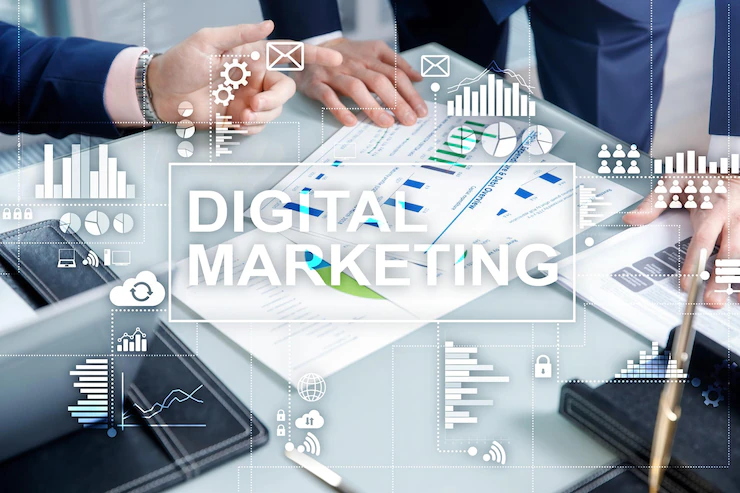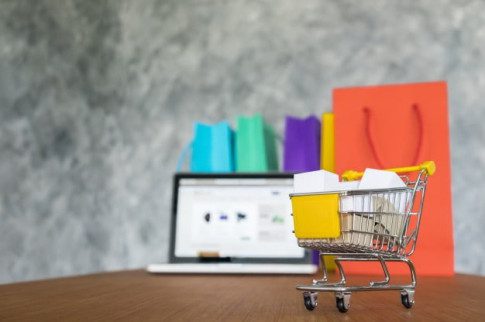How to Improve Your Retail Business Using Technology

Table Of Contents
The retail landscape has changed dramatically in recent years. Consumers accelerated the rise of eCommerce. This consumers compelled to adapt during the lockdown.
However, although online retail is growing steadily, having achieved a global value of $4.9 trillion in 2021, the physical store remains both dominant and resilient. In fact, most surveys suggest the e-commerce share of retail business is no higher than 17% so the demise of bricks and mortar shopping is a very long way off.
In fact, in-store shopping is undergoing a form of technological rebirth that could equip it with the resources it needs to resist the encroachment of eCommerce indefinitely. The range of technologies currently available to physical store owners is extensive and growing bigger all the time.
4 Technical Implementations To Improve Your Retail Business
The range of technologies currently available to physical store owners is extensive and growing bigger all the time.
Check out.
1. Digital Signage
The use of digital signage in stores has come a long way from the days of dot matrix messages. Today, it is an extremely versatile medium for driving traffic and boosting brand awareness. Controlled by highly intuitive software, which you can use to promote your brand message and values. In this case you can tell your company’s story, broadcast recent achievements and successes. On the other hand, you can run videos and infographics in your brand colors. You can share anything you want with your customers.

All content you can run on multiple screens. Therefore, you can place them in your window displays, at the main entrance, along the aisles, at the checkouts, and in fitting rooms. In this case you will immerse your customers in your brand identity while you seize every opportunity. This is all about advertising your products and services.
You shouldn’t underestimate the entertainment and interactive potential of digital signage. You can make the dissemination of information fun, with interactive features, animation, live feeds, and guest videos. Invest in 4K ultra-HD screens to make the experience even more memorable. Catch the eyes of window-shoppers and you’ll see a dramatic increase in footfall.
Digital signage might have been made for upselling and cross-selling. Digital displays can direct consumers to best-sellers, seasonal favorites, and special offers. Touch-points like this elevate impulse buying to a new level.
2. POS
Store owners have long recognized the benefits of electronic POS technology. Because it connects to a central database of products, it makes pricing and discount adjustments simple as well as speeds up the check-out process, which is always the consumer’s least favorite part of the experience.

To get the most out of your POS software, you should offer as many payment options as possible. Not so long ago, consumers were limited to cash, cheques, and a handful of credit and debit cards but that has changed with the invention of e-wallets.
It’s now possible to pay for goods in a wide variety of ways, even combining them so that the customer can split one transaction across several methods, including digitally-enabled reward points.
There are more benefits for the retailer than just convenience and speed. Using payment providers via POS software means not having to worry about compliance with data protection regulations. Since all the payment information is encrypted within the payment process, it is the payment provider who is considered the processor and transmitter of the information, not the retailer. Compliance is built-in.
3. Inventory Management
Keeping track of stock and making sure you can match supply to demand without the expense of overstocking is a constant headache. A digital inventory management system that is integrated with your other software solutions makes it easy to monitor stock levels and sales as well as track and control customer returns and exchanges.

4. Digital Marketing
Some technology operates outside the context of the store. For example, Google My Business is a service that enables you to market your store to the local community by opening an account (for free) and entering information about your business. You’ll then see your store appearing with preferential status in Google’s SERPs as a local supplier of the goods consumers are looking for.

Social media is another extremely useful resource to leverage. Although platforms like Instagram have a global reach, there are plenty of scopes to target a geographically defined audience.
Once you create links with local consumers and complementary businesses, you’ll see how quickly organic word-of-mouth marketing can increase customer traffic. Asking for feedback and responding positively to customer reviews is a great way to nurture trust and loyalty.
Technology is the retailer’s friend so take the time to explore the remarkable capabilities it can give you.
Additionals:
You May Also Like

September 3, 2024
Buying a Business For Sale: Weighing the Benefits and Drawbacks

January 20, 2021























